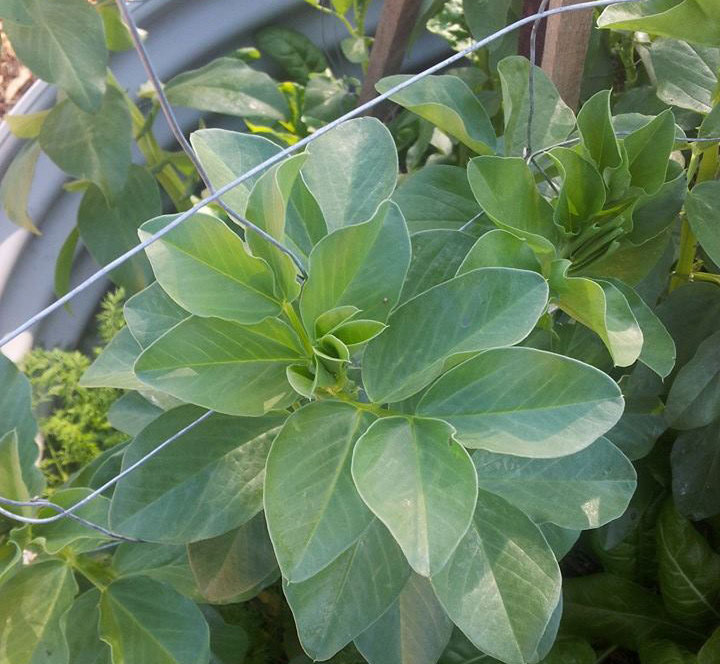Botanical name:
Vicia fava
Description:
Broad beans or fava beans are part of the legume family. The inedible pods of broad beans are thick and spongy, containing 2 to 7 large, flat, bright green tender beans. The plant builds 2 to 4 stems that grow up to 180 cm high. It shows white flowers with black dots.
The young leaves, shoots and flowers of the fava plant are all edible. Broad beans contain only very small amounts of lectins and can be eaten raw.
Broad beans are a good source of protein.
How to grow:
Sow three times as deep as the seed directly into a light, well drained soil. Soaking the seeds over night in a thin solution of liquid fertiliser before planting gives them a good headstart. Best planted at soil temperatures between 6°C and 24°C
Sow 20 cm apart, rows 25 cm apart. Support plants in windy places and grow at a structure.
Doesn’t need much fertilising.
12 to 20 weeks to harvest.
Growing in the neighbourhood:
Likes to grow with dill.
Pests and other problems and how we deal with them:
The young and fresh shoots of broad beans are often attacked by aphids. They have to be treated early and consistently in order to not loose a whole crop. Sprays with soap and oil keep them at bay.
Broad bean leaves often show brown spots called chocolate spot. This is a fungus that is hard to avoid. Small amounts don’t seem to affect our plants. If a plant gets a lot of chocolate spot and looks weak and ill we take it out entirely.
Season:
Late Winter to early Summer
Seed-saving:
The plants are pollinated by bees. Seed saving should be possible if the plants are kept a fair bit away from other legume plants in the garden.
How to harvest and use:
Broad beans are best harvested in late Spring. Harvest before the pods become tough. Often get a second crop. Leaves and stems are good for compost.
Fresh broad beans are often cooked with other spring vegetables, such as peas and asparagus. They can be pureed into spreads and served as appetizers. Pairs good with herbs, feta cheese, citrus, pasta, olive oil, cream or wine-based sauces, lamb and seafood.
